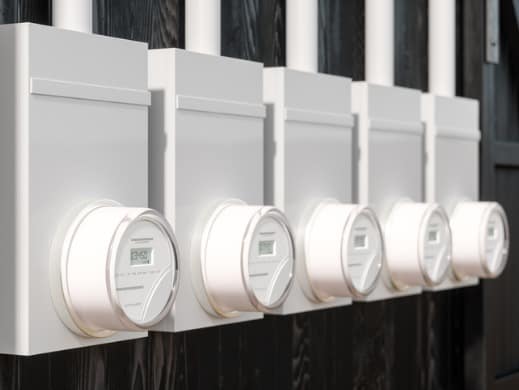As of this post, we’re well into COVID-19 stay-at-home orders in most parts of the United States. Although it doesn’t take much imagination to guess that residential energy use is going up with much more time at home than usual, we’ve been trying to ascertain exactly how much, and what the new load curves could mean for utilities and utility customer programs.
We’ve finished our first analysis using data from two US geographies, using over seven billion hourly AMI data points from more than 700,000 homes. Our results use the past 15 months of data – pre and post COVID-19 – and control for temperature, weather, daylight savings times, and weekend versus weekday use. Here’s what we’re seeing from the data of the first three weeks following stay-at-home orders in both geographies:
- Weekday average residential usage is up more than 20% in one geography and 30% in the other over what would have been expected at this time of year without stay-at-home orders. This is significantly higher than the 5-10% increases we saw in initial social distancing, before stay-at-home orders had become the norm. Weekend use is also up, but we’re waiting for data from a few more weekends to post the numbers with above 90% confidence.
- Overall average residential peak loads have increased more than 21% in one geography and 35% in the other over the same time period.
- Interestingly, we have also seen a shifting of residential peak times, although the type of shift seems to vary based on the underlying population in residential use. In one of our geographies, residential peak times shifted later in the day, from 1pm before stay-at-home orders to 3pm afterwards. However in the other geography, the residential peak time shifted backward, from 8pm to 6pm. We’re guessing that these will start to normalize to similar peaks and may move further with more data.
It’s important to note that this is just the first three weeks – it’s unclear whether usage and peaking are moving up or down from here. We will continue to monitor results and look to add additional customer AMI data to the analysis.
So what does this mean for utilities and their customers?
Customer Bills Will Increase and Even More in the Summer
First and foremost, it means that next month’s bill to customers could be 20-30% higher than they might be expecting. This will vary, based on local tariff structures and TOU rates, but is nonetheless a meaningful difference for families that could be facing job or income losses. Thankfully many utilities have rolled out disconnection moratoriums, which will protect the most vulnerable customers. However, this news does highlight customers’ need for advice and communication about what to expect and how to reduce their bills. It also gives a preliminary indication of near-term collections risks that utilities could face as part of the moratoriums.
The data also suggests that the increasing customer bill problem is likely to get worse as we leave the moderate temperatures of March and April and enter the cooling season – assuming that stay-at-home orders continue that long. Even if stay-at-home orders are relaxed prior to midsummer, likely bill increases could still be easily 20%+, as it could take individuals and the economy a while to return to regular patterns.
For utilities, the data also suggests that residential loads will at least partially offset expected reductions in C&I loads. Uplight is currently conducting analysis on C&I loads.
Utilities Need to Adjust Demand Response Programs to the New Demand Curve
The second big takeaway for utilities is that we need to create alternative plans for demand response programs, quickly. These substantially higher residential peaks suggest much more residential demand response (DR) capacity could be needed to offset system peaks, particularly as C&I demand is expected to be lower as some businesses are unable to operate and the economy struggles. Residential DR enrollment programs should be quickly remessaging to their new post-COVID purpose – maintaining power and keeping customer bills lower – and ramping up in earnest.
Apart from overall system demand, the data indicates that individual residential feeders may be experiencing elevated, potentially overwhelming demand. Demand program planning should be considering residential programs to target these feeders, specifically. The changes in peak times and geographical differences from the analysis further reinforce the idea that traditional residential DR planning should be re-examined to ensure programs can dispatch necessary loads at the times required.
This is certainly an important topic, one that we will continue to report on. We also recommend reading some of the other analysis out there – here are a few we’ve found interesting:
- Our prior blog post summarized several external sources on system-level demand impacts and projections in the US and abroad a couple weeks ago.
- The Pecan Street Project in Austin, TX shared some individual home breakdowns, including some end-use data.
- LevelTen Energy looked at ISO-level demand changes and their potential impacts on power markets.
While a few more weeks of data will give us a clearer picture of trends, it is clear that residential energy use is increasing and having an impact on customers’ bills as well as utility load shapes. More to come on the impacts of COVID-19 on energy usage as this continues to unfold. Subscribe to the Uplight blog for updates!




